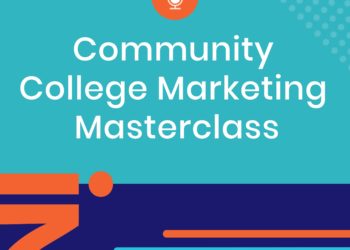
In this episode of the Community College Marketing MasterClass Podcast, Adam Lopez, the Esports Coordinator and coach at Imperial Valley College, joins Interact CEO Dr. Pam Cox-Otto and Student Social… Read More – Esports at Community Colleges
Success Stories March 21, 2018

Talk about clarifying the path. A new mobile-friendly website launched at Bakersfield College is revolutionizing how students are introduced to Guided Pathways, by laying out easy-to-understand, semester-by-semester roadmaps of needed courses from program entry to program completion, while also including data on occupations associated with each program.
Developed by Bakersfield College, in partnership with the Chancellor’s Office, the new pathways mapper is to community college catalogs what Google Maps is to the old Thomas Guide.
“The pathways mapper utilizes a new generation of technology to create a dynamic tool that is so far ahead of what is now being used in other colleges across the nation,” said Bakersfield College President Sonya Christian. “It puts us, the California Community Colleges, at the head of the class when it comes to 21st-century Guided Pathways maps.”
The mapper was introduced at Bakersfield College during a Feb. 27 soft launch that included default pathways for students exploring an Associate Degree for Transfer. The home page includes nine meta-major pathways, in subjects ranging from Health Sciences to Education. Students interested in an ADT in Business Administration with an emphasis in Accounting, for example, will see a default educational pathway detailing the necessary classes to be completed each semester, to qualify for transfer to a California State University campus. It also includes a wealth of occupational data, such as job prospects and expected annual salaries.
“Having a roadmap that makes clear what classes a student needs to take to reach his or her goal will be invaluable in increasing completion rates and in lowering the number of unnecessary classes that a student may take,” said Vice Chancellor of the Digital Futures Lab at the Chancellor’s Office Omid Pourzanjani. “So many students right now plan their schedules on their own and do not meet with a counselor in developing an education plan, so anything we can do to help them will be a big benefit.”
Christian said Bakersfield College now has four pieces of technology playing a critical role in helping students realize their academic goals: CCCApply, the pathways program mapper, Starfish, and eLumen. The program pathways mapper gets its curricular data from eLumen and from the Chancellor’s Office Curriculum Inventory (COCI). Over the next several months, a team of Bakersfield College faculty and staff will be working with the software design team at Concentric Sky to improve the mapper and include pathways for all associate degrees and certificates, not just for ADTs.
Pourzanjani estimates that the final product will be available to campuses throughout the California Community Colleges system in less than a year. Craig Hayward, who works with the RP Group and also serves as Bakersfield College’s Dean of Institutional Effectiveness, said it has always been part of the vision for the project that the mapper be made available to colleges throughout the state, so they can more easily create and publish default program pathways to completion for their students.
“This is the front end of clarifying the path for our students,” Hayward said.
College officials say the mapper will go a long way in meeting goals set out in the California Community Colleges’ new Vision for Success. At last count, only 48 percent of students who entered a California community college left with a degree or certificate, or transferred after six years, and students who complete an associate degree take an average of 5.2 years to do so. In terms of class credits, these graduates complete an average of 87 total units – 27 more than the minimum required. Excessive accumulation of units is a signal that there may be a lack of sufficient guidance to enroll in the right courses.
“College catalogues are not user-friendly,” Pourzanjani said. “You need to go through the schedule to find pre-requisites, co-requisites, and electives that might be applicable to a degree; it can be very confusing.
“Letting students see easy-to-follow graphical views of program maps for what they need to take to earn their degree sounds so simple, but it is a vast improvement over the current paper/pdf-based catalog model.”

In this episode of the Community College Marketing MasterClass Podcast, Adam Lopez, the Esports Coordinator and coach at Imperial Valley College, joins Interact CEO Dr. Pam Cox-Otto and Student Social… Read More – Esports at Community Colleges


Discovering and understanding your marketing team’s interpersonal needs can potentially help your team be more productive and happier as you ramp up your marketing efforts.